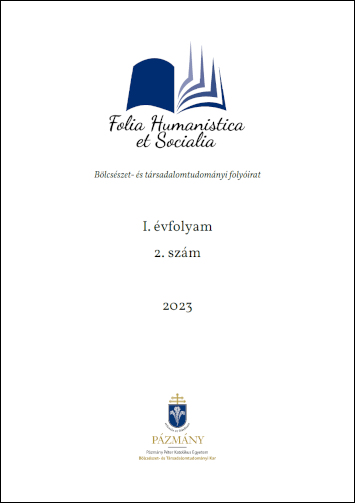How Do They Do It? Vocabulary Learning Strategies Used by Hungarian EFL Learners with Autism Spectrum Disorder: An Interview Study
Published 31-12-2023 — Updated on 11-06-2024
Copyright (c) 2023 Tar Lilla

This work is licensed under a Creative Commons Attribution 4.0 International License.
Abstract
Recently, there has been a growing interest in the ways people with autism spectrum disorder learn. Previous studies, however, have not dealt with language learning strategies. This paper, based on my MEd thesis, aims to portray the approaches of a group of adults with autism spectrum disorder towards vocabulary learning, as well as the vocabulary learning strategies they implement. Data were collected at the beginning of 2023 after a very detailed review of available literature on the topic. Participants (N=10) took part in sixty-minute-long deep interviews online. According to the results the most participants are not visual learners contrary to some of the literature reviewed. They have varied individual strengths, needs and preferences in their English as a foreign language studies. On the one hand, some respondents have and use very strong mental associations. On the other hand, they might struggle with the social aspects of language learning. Among learning strategies, mostly guessing and context-based ones were mentioned. Half of the participants felt that they would like to improve the way they learn vocabulary items.
References
- American Psychiatric Association (2013). Diagnostic and Statistical Manual of Mental Disorders (5th ed.). American Psychiatric Association.
- Anki. (2016). Anki — powerful, intelligent flashcards. Ankiweb.net. https://apps.ankiweb.net/
- Asperger, H. (1991). “Autistic psychopathy” in childhood. In Frith, U. (ed.), Autism and Asperger syndrome (pp. 37–92). Cambridge University Press.
- Attwood, T. (2007). The complete guide to Asperger’s syndrome. Jessica Kingsley Publishers.
- Caldwell-Harris, C. L. (2022). Passionate about languages, but listening and speaking – ¡Ay, Caramba! Autistic adults discuss foreign language learning. Journal of Multilingual and Multicultural Development, 1–16. https://doi.org/10.1080/01434632.2022.2029869
- Digard, B. G., Sorace, A., Stanfield, A., & Fletcher-Watson, S. (2020). Bilingualism in autism: Language learning profiles and social experiences. Autism, 24(8), 2166–2177. https://doi.org/10.1177/1362361320937845
- Garrity, M., McGlowan, T., Chen, S., Wall, J., Alonso, M. R., Lomasney, M., Nguyen, V. & Caldwell-Harris, C. L. (2018). Adults with autism discuss their experiences of foreign language learning: an exploration of the “different strategies” hypothesis. Open.bu.edu. https://hdl.handle.net/2144/37459
- Győri, M. (2014). A nyelv, a kommunikáció és a megismerés atipikus mintázatai és kapcsolatai autizmus spektrum zavarokban. In C. Pléh & Á. Lukács (eds.), PSZICHOLINGVISZTIKA - Magyar pszicholingvisztikai kézikönyv. Akadémiai Kiadó. Happé, F. & Frith, U. (2020). Annual Research Review: Looking back to look forward – changes in the concept of autism and implications for future research. Journal of Child Psychology and Psychiatry, 61(3), 218–232. https://doi.org/10.1111/jcpp.13176
- Hashim, H. U., Md Yunus, M., & Norman, H. (2021). English As Secondary Language Learning and Autism Spectrum Disorder: The Obstacles in Teaching and Learning the Language. Arab World English Journal, 12(2), 22–30. https://doi.org/10.24093/awej/vol12no2.2
- Hebron, J. & Bond, C. (2019). Education and Girls on the Autism Spectrum. Jessica Kingsley Publishers.
- Lukács, Á., Pléh, C., Kas, B., & Thuma, O. (2014). A szavak mentális reprezentációja és az alaktani feldolgozás. In C. Pleh, A. Lukacs, & P. Siptar (eds.), Pszicholingvisztika: magyar pszicholingvisztikai kézikönyv (Vol. 1). Akadémiai Kiadó.
- Maykut, P., & Morehouse, R. (1994). Beginning qualitative research: a philosophic and practical guide. Taylor & Francis.
- Mirenda, P. (2014). Augmentative and Alternative Communication. In F. R. Volkmar, S. J. Rogers, R. Paul, & K. A. Pelphrey (eds.), Handbook of Autism and Pervasive Developmental Disorders. Volume 2: Assessment, Interventions, and Policy.
- Mizumoto, A. (2010). Exploring the art of vocabulary learning strategies: A closer look at Japanese EFL university students. Kinseido.
- Nation, P. (2022). Learning Vocabulary in Another Language (3rd ed.). Cambridge University Press. https://doi.org/10.1017/9781009093873
- Oxford, R. L. & Griffiths, C. (2016). Teaching and researching language learning strategies: self-regulation in context (1st ed.). Taylor Et Francis Group.
- Rezvani, M. (2017). An Investigation into the Influence of Montessori Method on Professional Development of EFL Teachers and Productive Skills of Students with Autism [Thesis]. Eastern Mediterranean University http://irep.emu.edu.tr:8080/xmlui/bitstream/handle/11129/3841/rezvanimahsa.pdf?sequence=1
- Thekes, I. (2016). Assessing Young Hungarian EFL Learners’ Vocabulary and Learning Strategies [PhD Dissertation]. Szeged. https://doktori.bibl.uszeged.hu/id/eprint/3094/1/Thekes_doktori_ertekezes.pdf
- Vermeulen, P. (2012). Autism as context blindness. Aapc Publishing.
- Vermeulen, P. (2022). Autism and The Predictive Brain (1st ed.). Taylor & Francis.
- Volkmar, F. R., Reichow, B., Westphal, A., & Mandell, D. S. (2014). Autism and the Autism Spectrum: Diagnostic Concepts. In F. R. Volkmar, S. J. Rogers, R. Paul, & K. A. Pelphrey (eds.), Handbook of Autism and Pervasive Developmental Disorders. Volume 2: Assessment, Interventions, and Policy.
- Volkmar, F. R. & Wiesner, L. A. (2021). A practical guide to autism: what every parent, family member, and teacher needs to know (2nd ed.). John Wiley & Sons, Inc.
- Webb, S. & Nation, P. (2017). How Vocabulary is Learned. Oxford University Press.
- https://doi.org/10.1075/itl.00015.pau
- Yahya, S., Yunus, M. M., & Toran, H. (2013). Facilitating ESL Students with Autism Learn Sight Vocabulary: Teachers’ Practices and Voices. International Journal of Sciences: Basic and Applied Research (IJSBAR), 11(1), 90–98. https://core.ac.uk/download/pdf/249333552.pdf

